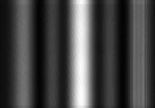 | ||
Quantum mechanics was first applied to optics, and interference in particular, by Paul Dirac. Feynman, in his lectures, uses Dirac's notation to describe thought experiments on double-slit interference of electrons. Feynman's approach was extended to N-slit interferometers for either single-photon illumination, or narrow-linewidth laser illumination, that is, illumination by indistinguishable photons, by Duarte. The N-slit interferometer was first applied in the generation and measurement of complex interference patterns.
Contents
- Probability amplitudes and the N slit interferometric equation
- Applications
- Comparison with classical methods
- References
In this article the generalized N-slit interferometric equation, derived via Dirac's notation, is described. Although originally derived to reproduce and predict N-slit interferograms, this equation also has applications to other areas of optics.
Probability amplitudes and the N-slit interferometric equation
In this approach the probability amplitude for the propagation of a photon from a source (s) to an interference plane (x), via an array of slits (j), is given using Dirac's bra–ket notation as
This equation represents the probability amplitude of a photon propagating from s to x via an array of j slits. Using a wavefunction representation for probability amplitudes, and defining the probability amplitudes as
where
where
and
after some algebra, the corresponding probability becomes
where N is the total number of slits in the array, or transmission grating, and the term in parentheses represents the phase that is directly related to the exact path differences derived from the geometry of the N-slit array (j), the intra interferometric distance, and the interferometric plane x. In its simplest version, the phase term can be related to the geometry using
where
represent the exact path differences. Here it should be noted that the Dirac–Duarte (DD) interferometric equation is a probability distribution that is related to the intensity distribution measured experimentally. The calculations are performed numerically.
The(DD) interferometric equation applies to the propagation of a single photon, or the propagation of an ensemble of indistinguishable photons, and enables the accurate prediction of measured N-slit interferometric patterns continuously from the near to the far field. Interferograms generated with this equation have been shown to compare well with measured interferograms for both even (N = 2, 4, 6...) and odd (N = 3, 5, 7...) values of N from 2 to 1600.
Applications
At a practical level, the N-slit interferometric equation was introduced for imaging applications and is routinely applied to predict N-slit laser interferograms, both in the near and far field. Thus, it has become a valuable tool in the alignment of large, and very large, N-slit laser interferometers used in the study of clear air turbulence and the propagation of interferometric characters for secure free-space optical communications.
Also, the N-slit interferometric equation has been applied to describe classical phenomena such as interference, diffraction, refraction (Snell's law), and reflection, in a rational and unified approach, using quantum mechanics principles. In particular, this interferometric approach has been used to derive the equations for positive and negative refraction, thus providing a reconciliation between generalized refraction and diffraction theory.
In one of these applications, the phase term (in parentheses) can be used to derive
which is also known as the diffraction grating equation. Here,
Further, the N-slit interferometric equation has been applied to derive the cavity linewidth equation applicable to dispersive oscillators, such as the multiple-prism grating laser oscillators:
In this equation,
Researchers working on Fourier-transform ghost imaging consider the N-slit interferometric equation as an avenue to investigate the quantum nature of ghost imaging. Also, the N-slit interferometric approach is one of several approaches applied to describe basic optical phenomena in a cohesive and unified manner.
Note: given the various terminologies in use, for N-slit interferometry, it should be made explicit that the N-slit interferometric equation applies to two-slit interference, three-slit interference, four-slit interference, etc.
Comparison with classical methods
A comparison of the Dirac approach with classical methods, in the performance of interferometric calculations, has been done by Taylor et al. These authors concluded that the interferometric equation, derived via the Dirac formalism, was advantageous in the very near field.
Some differences between the DD interferometic equation and classical formalisms can be summarized as follows:
So far there has been no published comparison with more general classical approaches based on the Huygens–Fresnel principle or the Kirchhoff's diffraction formula.
